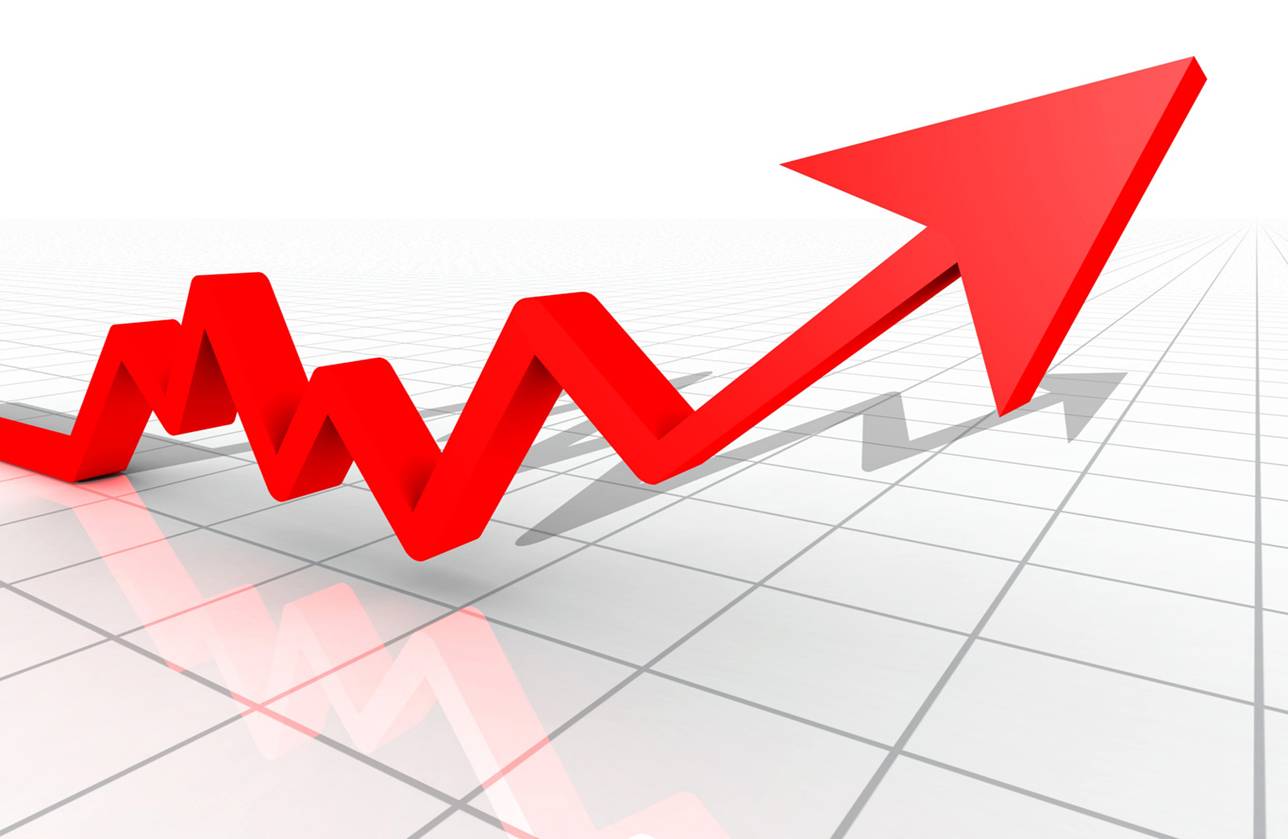Last week there were more NEGATIVE than POSITIVE developments, and short term investors sold stocks as their reaction to the news.
Below is a succinct list of last week’s events:
Positives:
1) UOM confidence jumps back to average level of the year as one year inflation expectations dip to 4.4% from 4.6%
2) 5 month low in mortgage rates leads to 9% jump in refi’s and 6.7% rise in purchase application
3) Germany and France lead solid Q1 GDP growth for Euro zone but sustainability in question
4) Hong Kong economy grew 11.2% annualized in Q1
5) China again raises reserve requirements after 5.3% CPI report and greater than expected loan growth.
Negatives:
1) CPI, PPI continue to rise with CPI now back above 3% y/o/y
2) Inflation t
akes bite out of April retail sales as sales ex gasoline rise just .2%
3) Initial Jobless Claims above 400k for a 5th straight week and 4 week average now at the highest since Nov
4) Weak US$, energy prices and higher Chinese labor costs lead to 11.1% y/o/y gain in Import Prices
5) NFIB small business optimism index falls to lowest since Sept with most growth categories lower and price index higher
6) Bank of England’s King says UK in stagflationary environment, is it headed here?
7) Political infighting amongst the EU, IMF, ECB and individual country members continue to drag out the fate of the Greek’s
Monthly Archives: May 2011
The Markets This Week

After months spent embracing all risky assets, Wall Street has come to a dividing line: One camp thinks the recent hint of economic slackening is merely a momentary holdup, and yet another chance to buy more stocks. The other isn’t quite as gung-ho and wonders if it should, as the old adage suggests, sell in May and go away.
Stocks flip-flopped for days before ending last week slightly lower, although the flat finish doesn’t camouflage the ongoing retreat from risk. Bond buyers drove the yield on 10-year Treasuries down to 3.187%, near the lowest this year and down from 3.74% in February. The defensive health-care sector has quickly become investors’ favorite hideout, and is up nearly 15% this year. In fact, 19 of 20 health-care stocks have zoomed above their 50-day moving averages, compared with just 69% of the components of the Standard & Poor’s 500.
Some of the apprehension can be traced to erratic commodity prices, which have pulled back from recent records. Inflation in China grew 5.3% in April, slower than the 5.4% pace in March, but still the second-fastest pace in nearly three years. And yet another move by the Chinese government to tighten credit has increased concerns that China’s economy might slow. Bank stocks struggled Friday on recurring fears about euro-zone debt, and weekly jobless claims recently topped 400,000 for a fifth straight week, the longest such spell this year. With gas prices high and job growth slow, some economists are acknowledging that U.S. economic growth this quarter might fall below the 3.2% pace the crowd hopes for, though the pros have yet to cut their forecasts.
Curiously, several Wall Street strategists have continued to raise their profit projections and targets. After all, governments will do anything to prop up the markets, and companies are spending their cash stashes on appeasing shareholders and on deals, like Microsoft’s (MSFT) $8.5 billion bid to buy Skype. Last week, Intel (INTC) raised its dividend, and retailers such as Kohl’s (KSS) and Macy’s (M) saw their shares pop after reporting robust earnings.
All in all, companies are reporting improved first-quarter profits, with sales expanding at a 10% clip that handily outpaces the sluggish economy. After shrinking for much of 2010, the margins by which companies exceeded analysts’ forecasts also ticked higher recently—partly because analysts grew cautious after the earthquake hit Japan. Last week, for example, Deutsche Bank’s chief strategist Binky Chadha nudged his forecast for S&P 500 profits this year to $99 from his previous mark of $96, and also raised his target for 2012 earnings to $106 from $102. He sees the S&P 500 ending this year near 1550.
Douglas Cliggott, Credit Suisse’s U.S. equity strategist, is more circumspect. “Earnings growth is still comfortably positive, but the slope of improvement is tilting lower,” he says. With the profit cycle maturing, tightening credit leading to softer demand in China, Brazil and India, and the U.S. central bank set to end its benevolent asset purchases in June, the market’s tone has turned cautious. Over the past three months, in fact, the top-performing sectors all come with a defensive bent, with total returns including dividends pushing 12.3% for health care, 9.4% for consumer staples, 7.4% for utilities and 7.2% for telecom services.
GMO’s Jeremy Grantham had previously argued that the S&P 500 could top 1400 by October, but now recommends trimming risk exposure. With headwinds including escalating raw-material costs and the end of the Federal Reserve’s second quantitative-easing campaign, he says he doesn’t feel “the same degree of confidence that I did, which was considerable, that the Fed could carry all before it” until October, he writes. “A third round of quantitative easing would very probably keep the speculative game going. But without a QE3, there seem to be too many unexpected special factors weighing against risk-taking in these overpriced times.”
Michael Darda, MKM Partners’ chief economist, had advocated buying cyclical stocks for much of the bull run, but he recently suggested pulling back from industrial, energy and materials and steering toward health-care, consumer and utilities stocks. “As global industrial demand slows and commodity prices come off the boil, the U.S. ISM manufacturing index may fall back to 50 or less, at least temporarily,” he notes. This compression in factory production has historically led to a 10-percentage-point swing in the S&P 500, although cyclical industrial, energy and materials sectors could correct more fiercely.
Moreover, “the commodity boom is long in the tooth,” Darda says. Measured from the 2001 trough to the 2011 peak, the expansion in real commodity prices has endured for 115 months—not counting the eight months or so when prices plunged during the credit crisis, before they climbed anew to fresh highs. That’s almost on par with the 113 months of the housing boom and the 114 months of the tech boom, he notes, constituting “an unprecedented run in both duration and magnitude” (Source: Barrons Online).
The Numbers
Last week, US Stocks and Foreign stocks decreased and Bonds increased. During the last 12 months, U.S. STOCKS outperformed BONDS.
Returns through 5-13-2011 | 1-week | Y-T-D | 1-Year | 3-Years | 5-Years | 10-Years |
Bonds- BarCap Aggregate Index | .1 | 2.3 | 5.7 | 6.2 | 6.6 | 5.8 |
US Stocks-Standard & Poor’s 500 | -.6 | 6.0 | 12.7 | -4.5 | -2.0 | 1.6 |
Foreign Stocks- MS EAFE Developed Countries | -2.2 | 3.6 | 17.3 | – 7.2 | -2.4 | 2.4 |
Heads UP!

There is both good news and bad news coming out of Washington’s attempt to reign-in our government’s deficit spending. The good news – both sides are talking. The bad news – both sides are now slinging mud at each other in their verbal assaults. The big reason for the mudslinging is that it’s easy to TALK about reducing the deficit, but it is incredibly difficult to actually pull it off. To get a sense of some of the immense size of the steps needed, according to one expert, read the following report starting at page 37 – click here
Motivational Quote of the Week

“This one step – choosing a goal and sticking to it – changes everything.”
– Ishmael Scott Reed
Personal Notes

I recall exactly where I was when the news broke that JFK was shot. The same for the instant the first plane hit the World Trade Center. And, now for when the news hit that Bin Laden has been killed. Perhaps, Cesare Pavese was correct when he said:
Economic Reports Last Week

Last week there were more NEGATIVE than POSITIVE developments, but the stock market “climbed this wall of worry” to post a solid increase.
Below is a succinct list of last week’s events:
Positives:
1) Bernanke in his press conference implicitly says the end of QE2 in no way means tightening soon to follow
2) Univ of Michigan and Conference Board confidence #’s up a touch in April
3) New Home Sales a punk 300k but higher than expected
4) Pending Home Sales rise 5.1%
5) Milwaukee joins NY mfr’g survey as exceeding forecasts
6) China HSBC pmi holds steady
Negatives:
1) Chicago, Dallas and Richmond mfr’g surveys below estimates
2) Initial Claims disappoint for 3rd week, 4 week avg back above 400k
3) Durable goods orders ex transports bit below est (but prior month revised up)
4) MBA said purchases fell 13.6% to 2 month low
5) Inflation expectations in confidence data remain elevated
6) Gasoline prices up another $.05 to within $.20 of record high
7) Euro zone CPI up to 2.8%
9) Portugal, Ireland, and Greece yields continue to spike
The Markets This Week

These are jubilant days for the U.S. stock market, which makes the decision last week by Superman—the cape-wearing superhero, not Fed chairman Ben Bernanke—to renounce his U.S. citizenship all the more perplexing. Is the Man of Steel worried about the dollar’s waning purchasing power, or feeling outshone by Bernanke’s herculean effort in lifting risky assets? Or has he been keeping his 401(k) plan in cash, instead of stocks?
The market was awash in records last week after Bernanke, our money-printer in-chief, signaled an end to the central bank’s Treasury-buying this June but promised to hold interest rates low well beyond that. As the dollar fell for eight straight days to a three-year low, the Russell 2000 index of small stocks joined mid-cap stocks at an all-time high, as did the Dow Jones Transportation Average. Large stocks climbed to three-year highs, while the Nasdaq Composite Index surpassed its 2007 credit-bubble peak to reach its highest close since December 2000.
By keeping their staffs lean and working everyone harder, U.S. companies kept their margins plump and managed to grow their profits much faster than the 1.8% pace by which the U.S. economy expanded in the first quarter. Ford (ticker: F) earned its biggest first-quarter take in 13 years, and profits jumped 36% at Chevron (CVX) and 69% at Exxon Mobil (XOM). Wall Street analysts, who hushed their bullish chorus when oil prices climbed and after the earthquake hit Japan, have resumed raising profit estimates. Over the past four weeks, they’ve raised their forecasts on 702 stocks within the Standard & Poor’s 1500 and cut just 473, says Bespoke Investment Group. That produces a net upgrade of 229, or 15.3% of the index—the most bullish in more than 10 weeks.
Economists seem just as hopeful. While many recently cut their estimates for first-quarter growth to 1.5% to 2%, most still expect U.S. economic growth to re-accelerate toward 3% or so in the second half. Main Street seems a lot less sure, with investors pulling roughly $6 billion from domestic mutual funds over the past two months (Source: Barrons Online).
The Numbers
For the second consecutive week, US Stocks and Foreign stocks and Bonds all increased. During the last 12 months, U.S. STOCKS outperformed BONDS.
Returns through 4-30-2011 | 1-week | Y-T-D | 1-Year | 3-Years | 5-Years | 10-Years |
Bonds- BarCap Aggregate Index | .6 | 1.7 | 5.4 | 5.8 | 6.3 | 5.7 |
US Stocks-Standard & Poor’s 500 | 2.0 | 8.8 | 12.9 | -3.4 | -1.7 | 1.3 |
Foreign Stocks- MS EAFE Developed Countries | 2.3 | 8.4 | 15.9 | – 5.6 | -1.2 | 2.7 |
